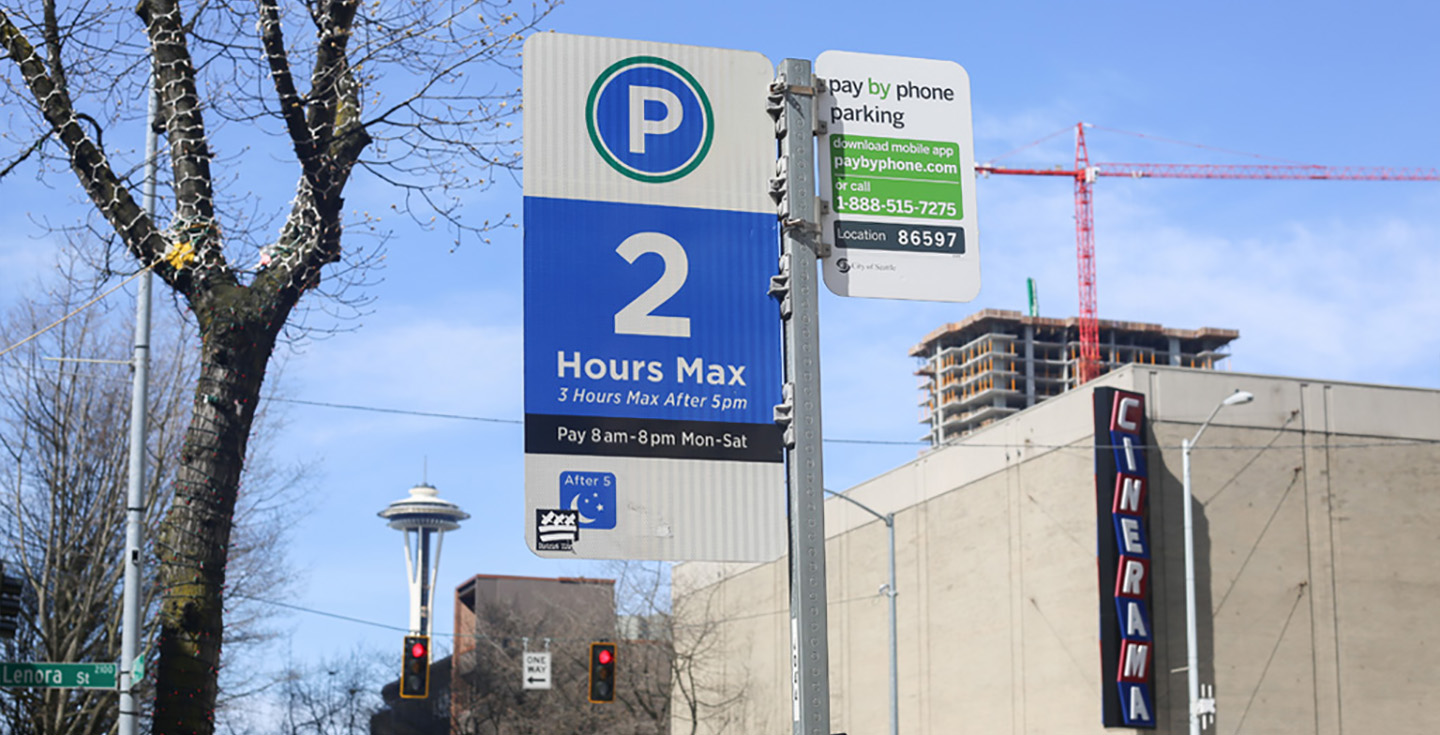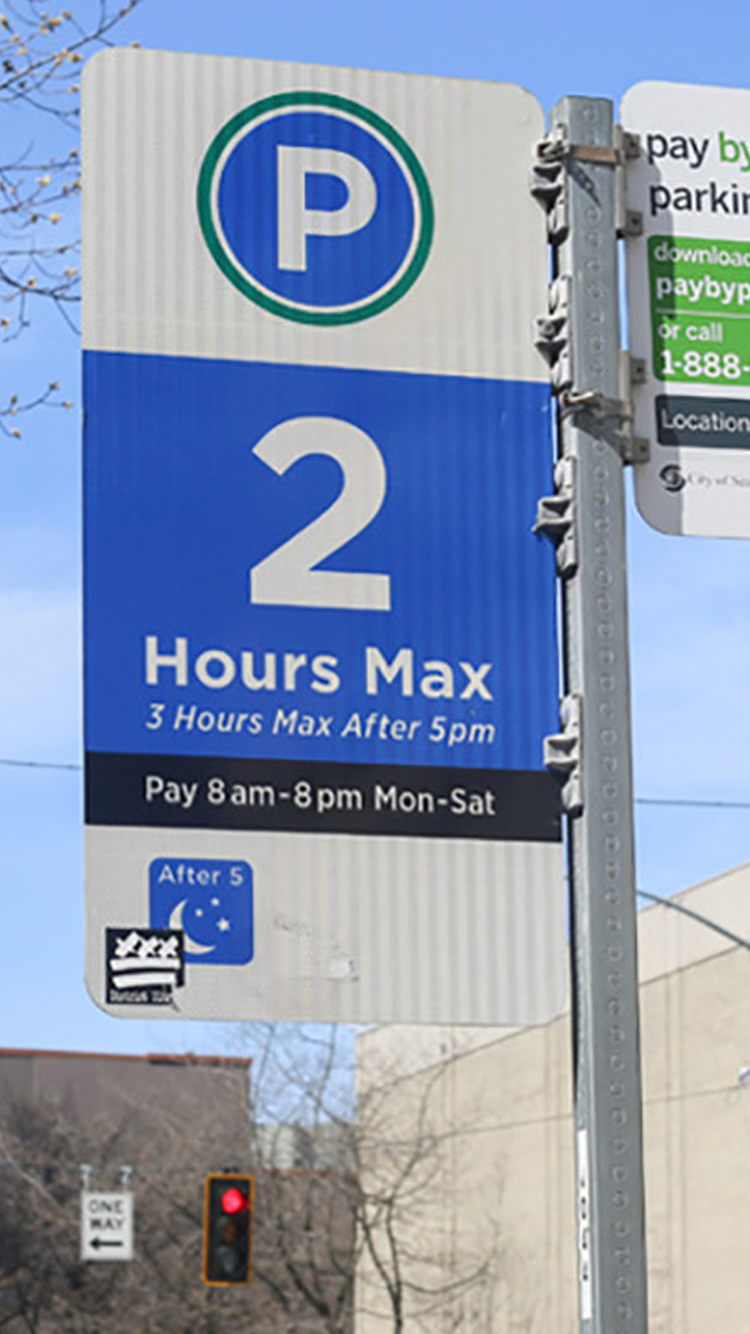

Street view Part II
April 7, 2014SEEKING A BETTER METER
On April 11, the Seattle Department of Transportation will conclude its trial of seven new pay parking stations along Fourth Avenue downtown. In our last post, we pointed out some of the major usability shortfalls in the machines; now we’ll focus on the opportunities that remain in improving the city’s overall experience of parking.
The Tactile team spoke with Margo Polley, Project Manager, who outlined SDOT’s priorities in selecting the new meters. They include options for physical retrofits and technology updates; reliable network connectivity; adaptable pay rates for time-based “value pricing”; a full keyboard for pay-by-plate; and faster credit card processing. The seven pay station models selected by the city are now on the street for testing, and one of those models will soon be installed at 12,000 locations throughout Seattle.
Unfortunately, SDOT didn’t establish any specific usability criteria or define an optimal pay parking experience. Before budget cuts, Seattle had a more centralized design office that might have overseen a cohesive visual system or user experience mandate. Without that, the city is doing its best to create a better driving and parking experience within city limits.
SDOT earnestly wants Seattle to be among the most innovative cities worldwide in terms of parking policy and implementation. Los Angeles and San Francisco, for example, have experimented with chips embedded in busy streets to help adapt the price—and therefore parking inventory—at peak times. Calgary and Pittsburgh are phasing in pay–by–plate systems that reduce waste and enforcer time. It’s hard to innovate, however, with a strained budget, a burdensome bureaucracy and limited hardware options.
What’s a forward-thinking (but under–resourced) city to do? In our opinion, Seattle should start by establishing a set of basic usability principles that SDOT can incorporate into future projects: uniform controls, consistent graphics, balanced human factors and intuitive information architecture. Tactile shared our interaction insights with SDOT and we believe even minimal improvements to the trial machines’ interface could make paying for street parking easier and faster.
GOING MOBILE
On the plus side, Seattle has been exploring a new mobile tech approach to parking. First rolled out in August 2013, PayByPhone is a city service that lets drivers pay for parking via smartphone app or by calling a toll free number. At PayByPhone’s launch, Mayor Mike McGinn commented that, “just by using your phone, it’s now faster and easier to pay for parking in Seattle. We’re deploying technology to make it more convenient for people to visit downtown and our neighborhood business districts.” PayByPhone has already been successfully implemented by other cities including San Francisco, Vancouver, New York, Boston and Miami.
So far in Seattle, however, PBP has only seen a 3% adoption rate (about 125,000 parking purchases were made via PayByPhone from August 2013 to April 2014). SDOT and PayByPhone representatives agree that initial marketing campaigns helped jump-start the program, but more word of mouth will be essential for increased adoption. They said that drivers who do use PayByPhone generally prefer it to traditional meters; the biggest barrier is simply lack of awareness. Some of the benefits for drivers include:
• Drivers can pay for parking from their car—and add time from a remote location.
• The app sends automatic reminders to a user’s phone when parking time is running out.
• Motorcycle and scooter owners don’t need to stick pay station receipts to their bike headlights.
• Quicker transactions, since the app stores previous payment and license plate information.
• Drivers can look up past transactions and print parking receipts online.
The city, meanwhile, benefits from better data integration, less wear and tear on physical meters (which means fewer repairs), reduced cash collection and easier adaptation to demand–based pricing. Not to mention the fact that more people add time (and therefore revenue) remotely when they underestimate their parking time and would have previously risked a ticket rather than making a second trip to the meter. From a user experience standpoint, the PayByPhone app can also be updated regularly, allowing for new features and fixes.
There are a couple of drawbacks: PayByPhone users pay a thirty–five cent convenience fee for each parking transaction. And calling PayByPhone from a non–smartphone doesn’t really save much time over using a physical pay station (unless coins are the alternative). But for smartphone–carrying, tech–loving, efficiency–craving drivers—particularly those who park in South Lake Union, downtown and Capitol Hill—PayByPhone is a boon.
So how can Seattle increase adoption to take advantage of a technology that seems to be effective and user–friendly? Try some incentives: Waive the convenience fee or discount parking for residents, as Miami has done. Or put energy into a viral promotional campaign that incentivizes Seattle drivers and visitors to download the PayByPhone app before they’re even near a meter. More usage means better parking data and more revenue for the city—and a better user experience for drivers who just don’t want to deal with confusing meters.
SDOT’s Parking Pay Station Trial ends on April 15 (you can take the survey at seattle.gov/transportation/parking/newpaystations). We hope the city will learn from user feedback and make usability tweaks to both the new station interface and any future systems. If the cloud in replacing 12,000 parking meters is choosing among models that are decidedly more reliable but only slightly more user–friendly, then PayByPhone might just be the silver lining.